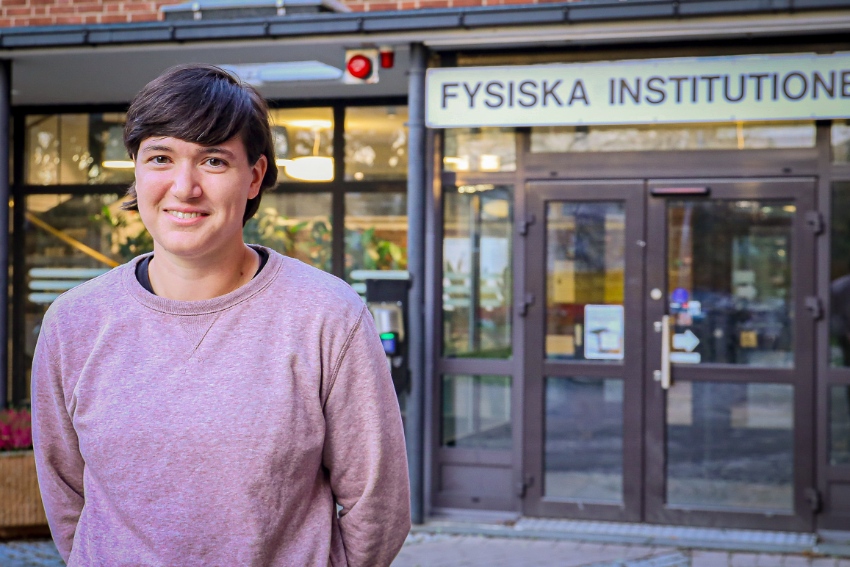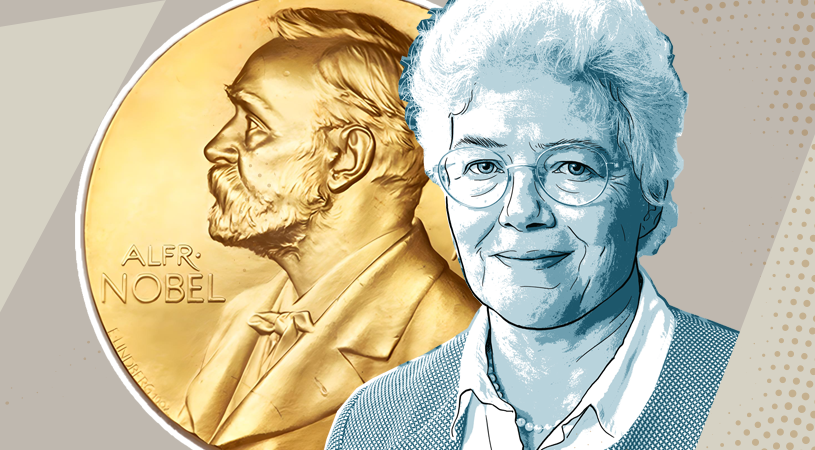The breakthroughs benefiting ultrafast laser research – and the world
Anne-Lise Viotti is an associate senior lecturer at the Division of Atomic Physics. Here, she explains three discoveries with major implications for ultrafast science and experiments with attosecond pulses.
Tiina Meri – Published 8 December 2023

1
The Schrödinger equation was postulated by Erwin Schrödinger in 1926 and is today a fundamental wave equation within quantum mechanics. It describes the movement of electrons and other small particles over time.
“The equation is universal and connects the physically observable world with quantum mechanical interpretations. We use it all the time, it is essential for understanding many of the measurements we take. It can also be used to design experiments and interpret the results,” says Anne-Lise Viotti.
2
Photoionisation and the photoelectric effect can be described as the interplay – or interactions – between light and matter.
“These mechanisms are fundamental to everything we study,” says Anne-Lise Viotti.
Photoionisation takes place when light interacts with gas, while the photoelectric effect (for which Albert Einstein was awarded the Nobel Prize in Physics) occurs when light hits solid materials such as metals. Both mechanisms lead to the emission of an electron from an atom.
“With attosecond pulses, we can make a movie of the electron in motion and thus learn more about intrinsic processes in nature. One concrete example is tracking electrons and observing if and how they move within a molecule over an extremely short period of time. This could enable us to investigate how chemical reactions start, and possibly even control them, with implications for medical treatments in the future, among other things.”
3
Chirped pulse amplification (CPA) is a type of laser technique that was recognised by the 2018 Nobel Prize. Two of the laureates – Gérard Mourou and Donna Strickland – paved the way for the shortest and most intense laser pulses ever created. An article published in 1985 became the centerpiece of Strickland’s doctoral thesis.
CPA quickly became the standard for the high-intensity lasers that followed and has been applied in vision-correcting eye surgery, to take one example.
“This technology is a workhorse for the generation of attosecond pulses, as it is still used today to build high-intensity short-pulse laser systems. CPA provides reliable pulses that are utilized in both research and industry.
So Anne L’Huillier was delighted when Strickland and others discovered CPA?
“Yes, it was a golden age of ultrafast laser technologies, which enabled further progress in attosecond experimentation,” says Anne-Lise Viotti.

The Nobel Prize in Physics 2023
Professor Anne L’Huillier, Atomic Physics at LTH, was awarded the Nobel Prize in Physics in 2023, jointly with Pierre Agostini and Ferenc Krausz, for their experiments, which have given humanity new tools for exploring the world of electrons inside atoms and molecules.
